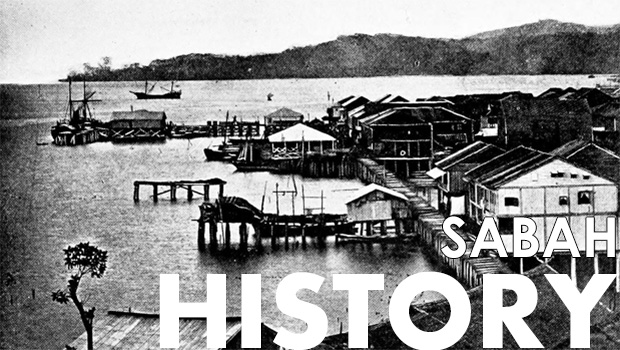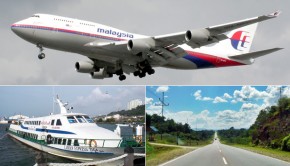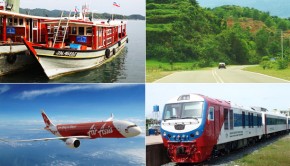Sabah History
Sabah is the easternmost state of Malaysia. It is at the northern tip of Borneo Island and one of the two Malaysian states on the island. The other state and the largest in the country is Sarawak, which is on the southwest of Sabah. To the south, it shares border with Indonesia.
The capital of the state is Kota Kinabalu, which was formerly named Jesselton. The state consists of forests, mountains, farms, lakes, lagoons, beaches and many natural features that make it one of the top tourism destinations in the World. Human influence and infiltration of manmade structures is relatively low in the state. However, it is not deprived of tourism facilities.
Kota Kinabalu gained the status of city in 2000. It was the first city in Sabah and the sixth in the country then. UNESCO officially designated Kinabalu National Park as World Heritage Site the same year. Some important events that occurred in the following years were declaration of Ligitan and Sapadan as part of Sabah by International Court of Justice and the abolishment of the rotation system in 2005.
The present Sabah is an haven of tranquil and serenity but, like many other regions on Earth, it has a fair share in history of human civilisation. In fact, there are evidence of human settlement in the area about thirty thousand years ago.
Since Sabah is part of the Borneo Island, its history is entwined with that of Malaysia and Brunei. However, the earliest record of organised civilisation in Sabah is that from the Sultanate of Brunei and dates back to the 15th century. Prior to the establishment of the sultanate, tribal societies existed. Though they reduced in numbers and size, they thrived even in early 20th century.
Sultan of Brunei granted eastern part of the state to Sultan of Sulu, who had allied with him against certain enemies of Brunei. However, there are studies that claim that no part of the state was given up by Sultan of Brunei. British infiltration in the region started in late 19th century, when both Sultans granted their territories to the foreign syndicate. It did not take long for Sabah to become a brown colony from being protectorate of the UK in 1888. Sabah was called as North Borneo until then. It merged with Singapore, Sarawak and Malaya to form Federation of Malaysia.
Self-government was established in North Borneo in 1963, which is the year when the idea of formation of a wider federation was proposed by Tunku Abdul Rahman with possibly support from the British. However, debates, disputes and uncertainty clouded Federation of Malaysia since late 19th century. Demand for complete independence had started to rise in the region by 1962 but the status was rejected by the then British General. Eventually, community leaders representing Muslims, Chinese and other non-Muslims agreed upon the formation of the federation, which came into existence precisely on 16th September. Federation of Malaysia constituted of Malaya, Sabah, Sarawak and Singapore, which was expelled after Malaysian parliament voted 126-0 in favour of exclusion in 1965. Thus, Federation of Malaysia became Malaysia.
Tun Mohammad Fuad Stephens and Tun Datu Haji Mustapha bin Datu Harun respectively became the first Chief Minister and the first Governor of Sabah. In 1967, first proper state elections were held and Tun Mustapha was elected as the Chief Minister as a result. Death of parliamentarians, including Tun Fuad, in a plane accident and insurgency in neighbouring countries shaped Malaysia during the next few years. The first big step towards economic development in Sabah was the granting of extraction rights to Petronas – the petroleum company owned by the federal government.
In 1994, the then Prime Minister Mahathir Mohamad introduced the system of rotation of Chief Minister among the 3 major communities in Sabah every couple of years. The rotation system ensured that Muslim Bumiputras, Non-Muslim Bumiputras and Chinese will all get opportunity to hold position as Chief Minister of the state.
Present Sabah is more than just a favourite destination for tourism. It is combination of educational, economic and cultural development. There are twenty eight institutes for higher education in Sabah and 4 of them offer post-graduation courses. Besides, hundreds of schools for primary and secondary education can be found in the state.
Being part of an island, 7 ports intersperse the coastline of Sabah. At the economy front, eco-tourism is the major contributor. Hundreds of thousands of people visit Sabah to experience the natural beauty. On the other hand, there are numerous small and medium-sized enterprises in Sabah. Sabah Development Corridor is an industrialisation plan that is being pursued by Sabah government. The area chosen for the purpose is Sepanggar, where Sepanggar Container Port Terminal and KKIP Industrial Park are already located.







 Lowest Rate
Lowest Rate
